Ice covers almost 15 million square kilometers of Earth’s land surface. That’s a lot of land! It helps keep Earth’s climate in balance (not too hot and not too cold). And it keeps Earth’s oceans at the levels we’ve come to expect (not too high and not too low). In other words, Earth’s ice is important to all living things.
So last summer, I decided to go check out some ice. I hopped on a plane to Iceland, then into a rental car, then into a 4-wheel drive jeep, then onto a skidoo to visit the Vatnajokull ice cap. It was AMAZING!
Once you get up into the mountains, you see the ENORMOUS field of ice – very beautiful, very windy and cold, and VERY BRIGHT. Check out the video I took while on the top…. (Sorry about all the noise in the video. It’s very windy on an ice cap on top of a mountain!)
That very white ice reflects the sun’s rays. The sun’s heat bounces back into the atmosphere, rather than being absorbed by the earth. That helps keep the planet from getting too warm.
You can see this for yourself by shining a light toward hard-packed snow, and then shining a light toward a dark surface (such as black construction paper). See how the light is reflected off the snow, but not reflected off the darker surface?
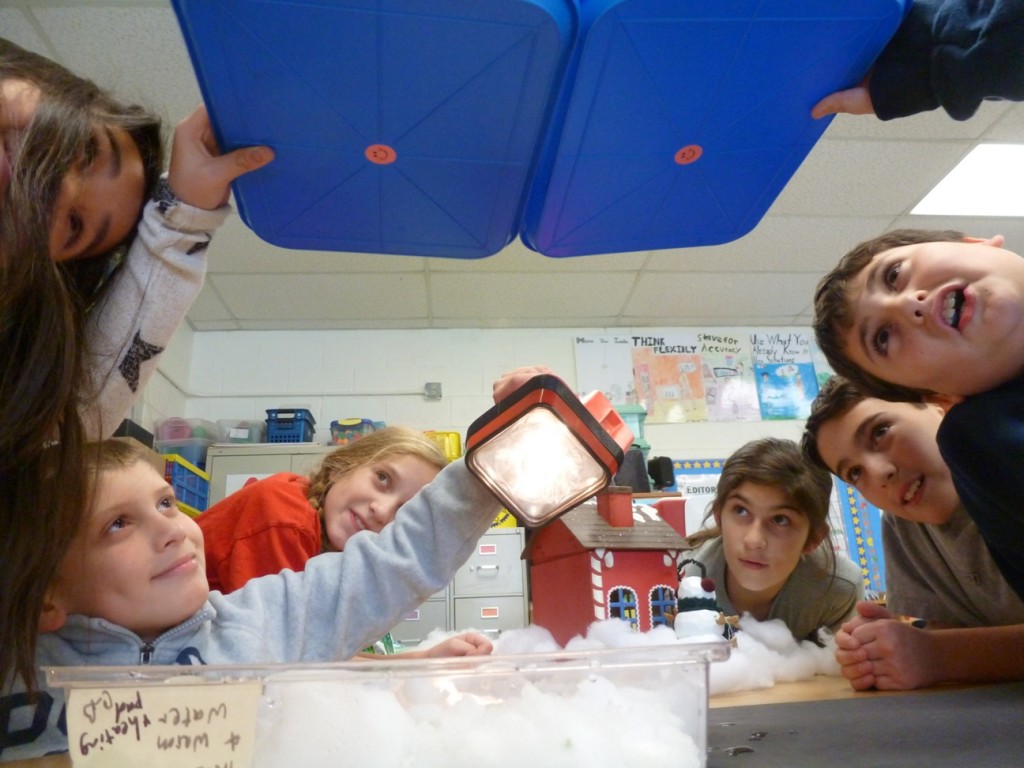
When the classroom light is turned off, the students see the light of the flashlight reflect off the snow and shine on the bottom of the trays.
While in Iceland, I also flew over the Vatnajokull ice cap to get a bird’s-eye-view.
From the air, you begin to understand the enormous size of this sheet of ice.
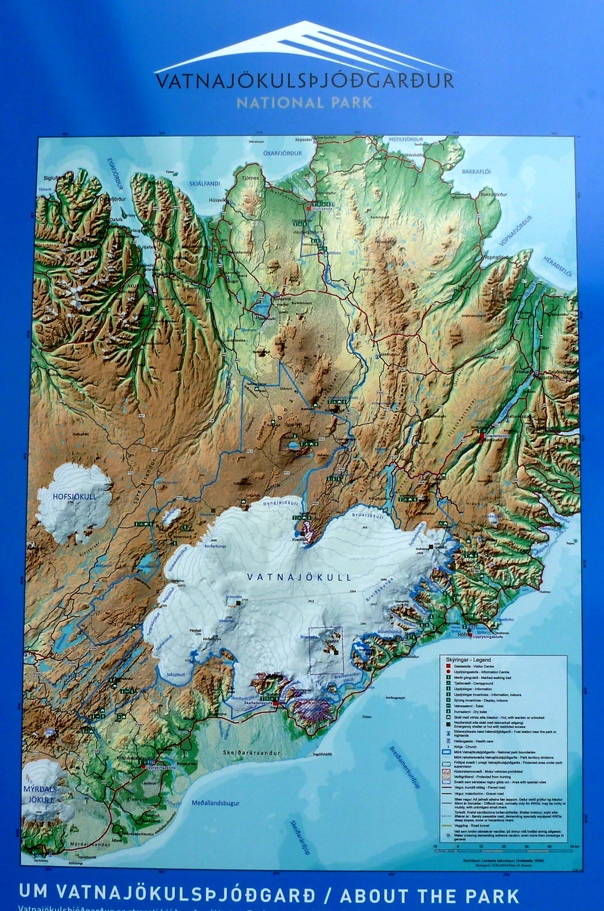
Here’s a model of the Vatnajokull ice cap in Iceland to help you understand it. You can see it covers a large part of the southeast portion of the country.
The problem is that the ice is melting. Scientists have evidence that Earth’s ice is melting. Global warming is the cause. Air pollution causes the world’s temperatures to rise. The warmer temperatures melt the ice.
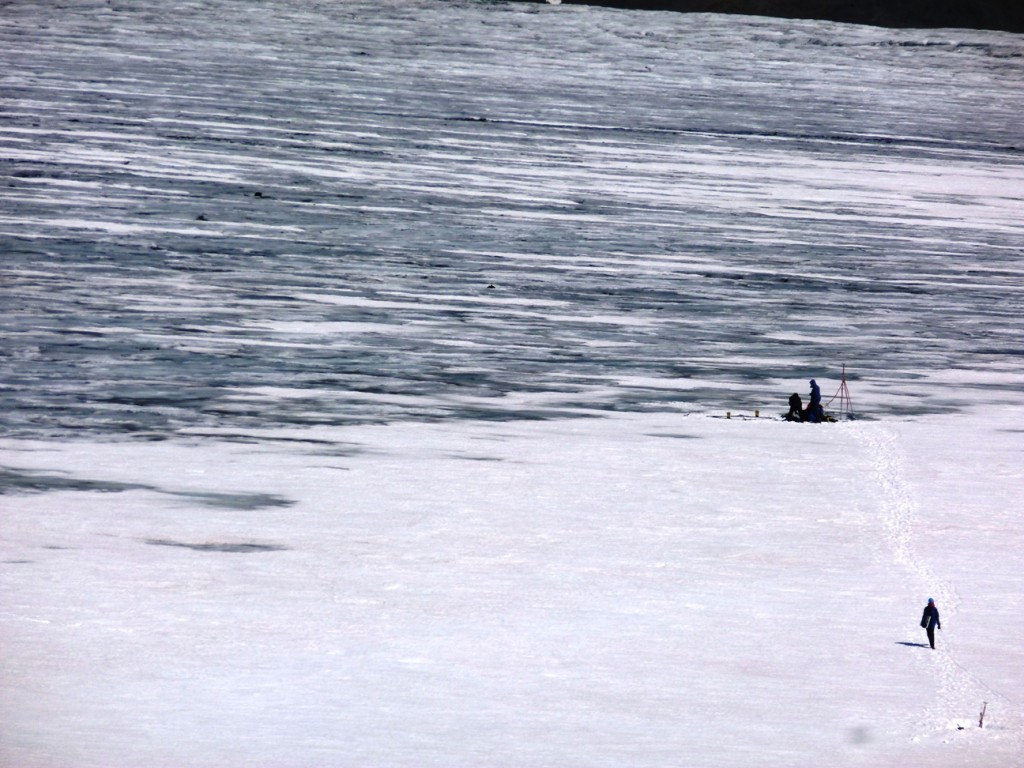
Here I saw scientists measuring the thickness of the ice by drilling down into the ice cap. The black you see in my photo is volcanic ash that has mixed with the ice.
The more Earth’s ice melts, the more heat our planet absorbs from the sun. (Apologies again for the wind noise.)
The less white ice we have to reflect the heat, the more Earth heats up. You can see where this is going, can’t you? Heating→ Melting → Heating→ Melting→Heating→ Melting→……
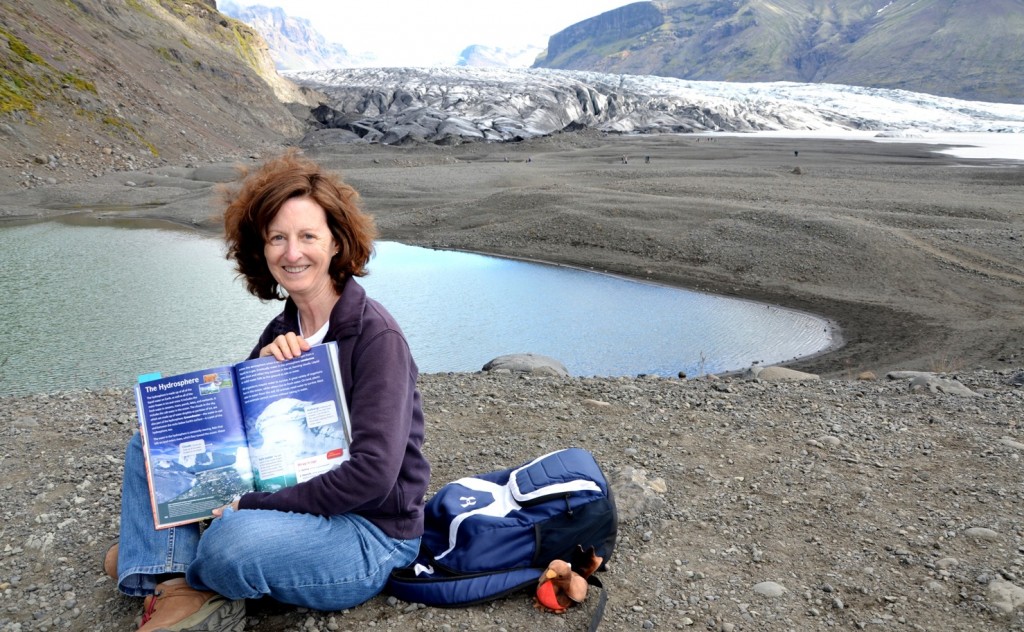
Chirpy and I are sitting in a glacial moraine. This area used to be covered by the glacier you see in the background. It’s melting away, leaving grey rocks to absorb the sun’s heat. (No, I’m not having a bad hair day. It was very windy.)
We need Earth’s ice to keep our planet’s temperatures close to what they are now. All living things depend on Earth’s ice.
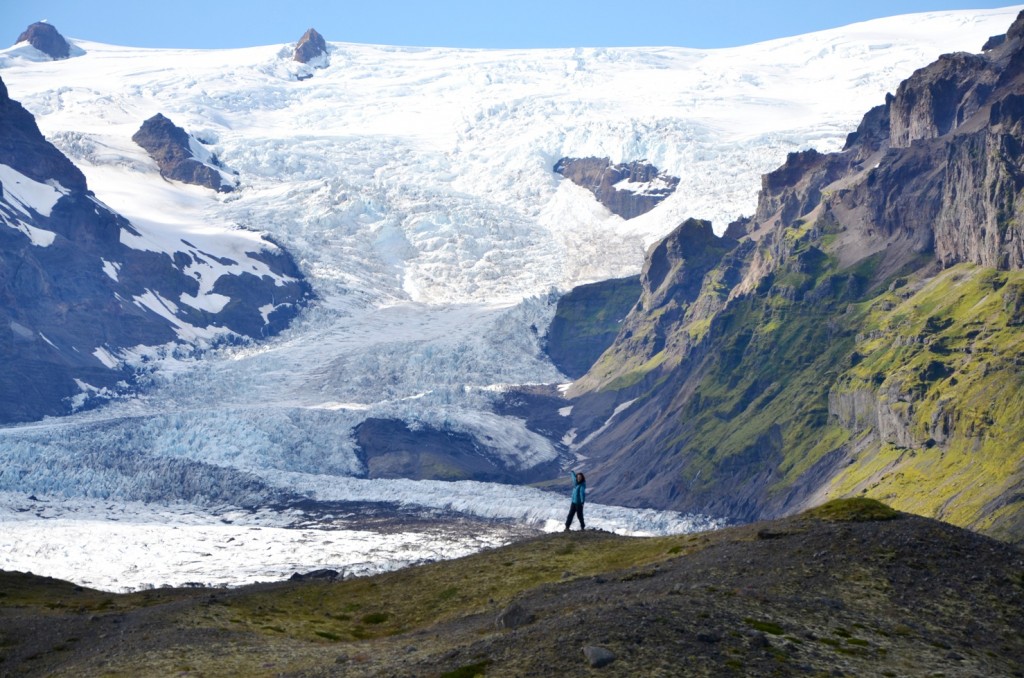
Here’s another area where the glacier used to be much thicker, and cover a much larger area. All the ground you see, including the ground I’m standing on, had been covered by the glacier for thousands of years.
It’s important that we do what we can to reduce the amount of pollution we put in the air. When we reduce air pollution, we slow down global warming. That will slow down the melting of Earth’s ice. For ideas on ways you can help, click here.
At a recent science conference for teachers, a glaciologist showed us an ice core he collected from Antarctica. An engineer invented the drill that allowed the scientist to drill deep down to gather ice from thousands of years ago.
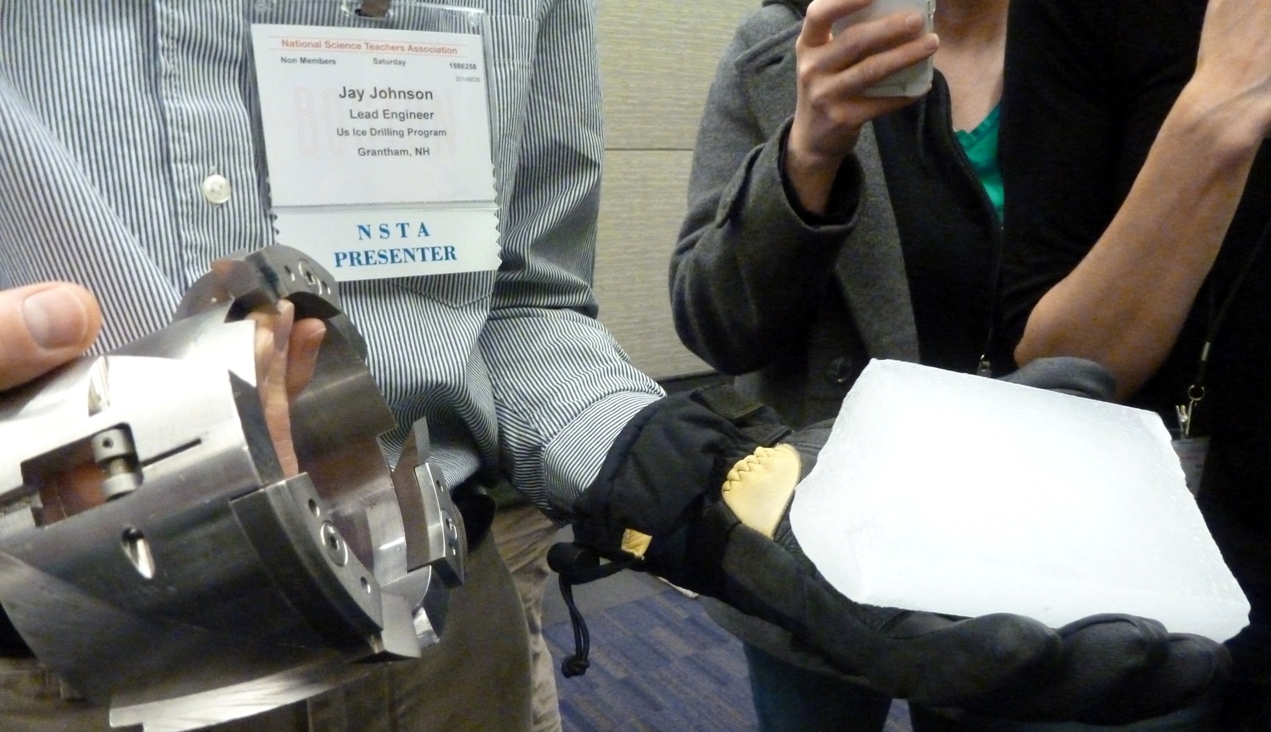
An engineer from the United States Ice Drilling Program shows us part of the drill that was used to capture the core of ice.

Here’s a close-up picture of the piece of ice core all the way from Antarctica!
Can you see the bubbles in the ice core? What do you think caused these bubbles? What important information do they hold?
Click here for more information on ice cores.
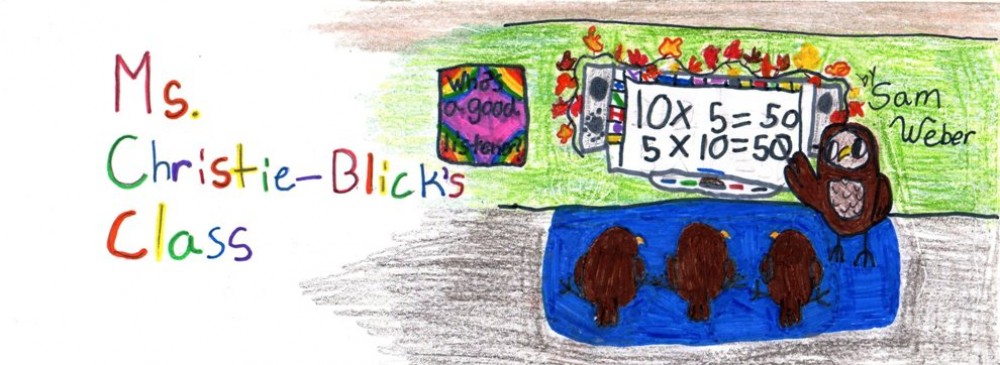
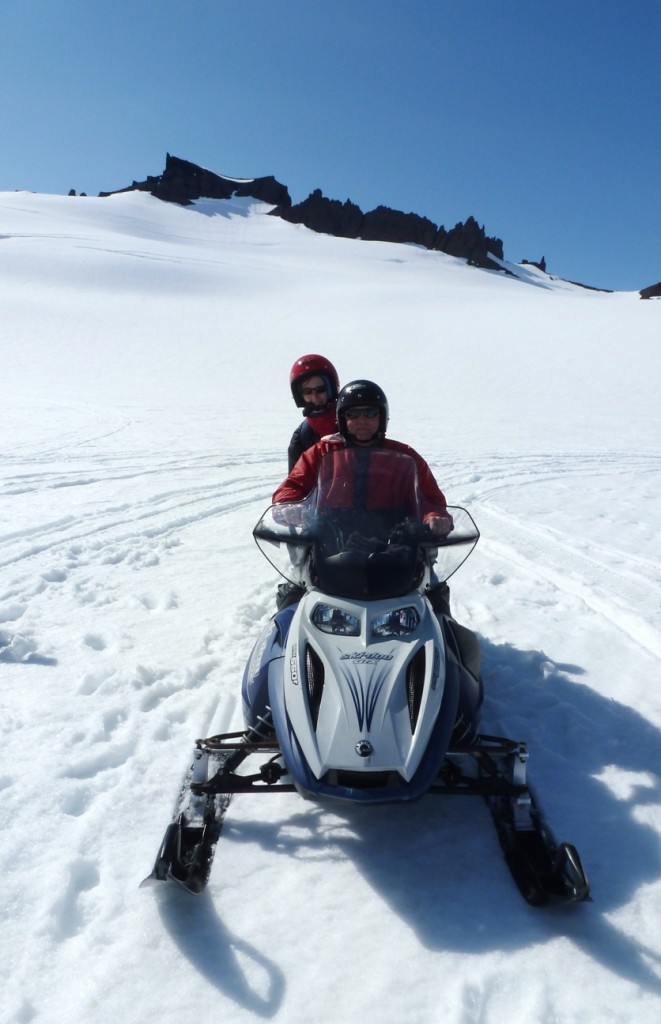
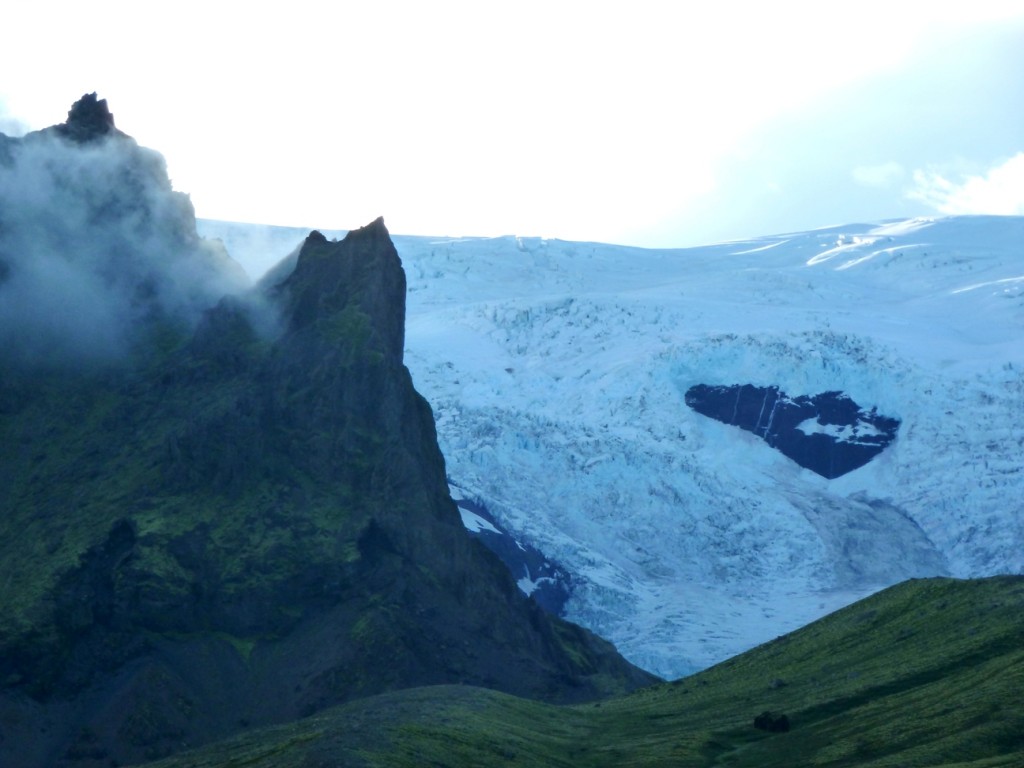

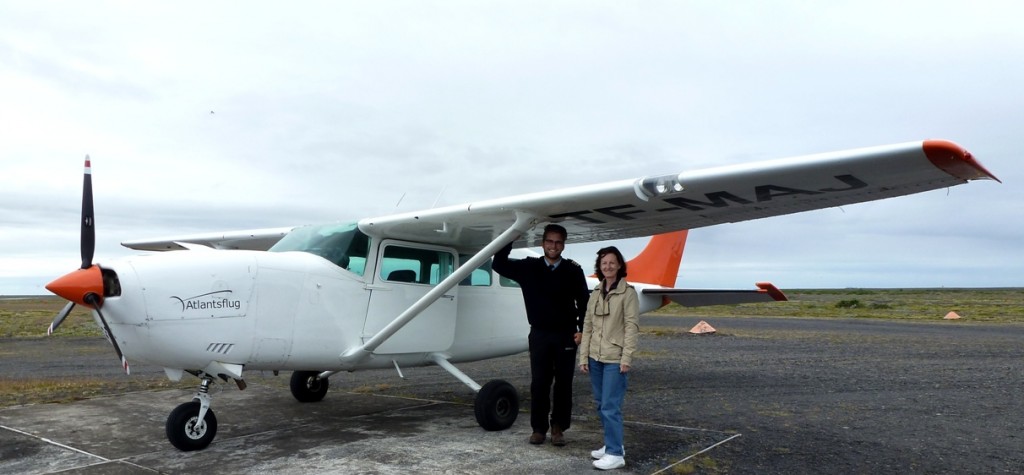

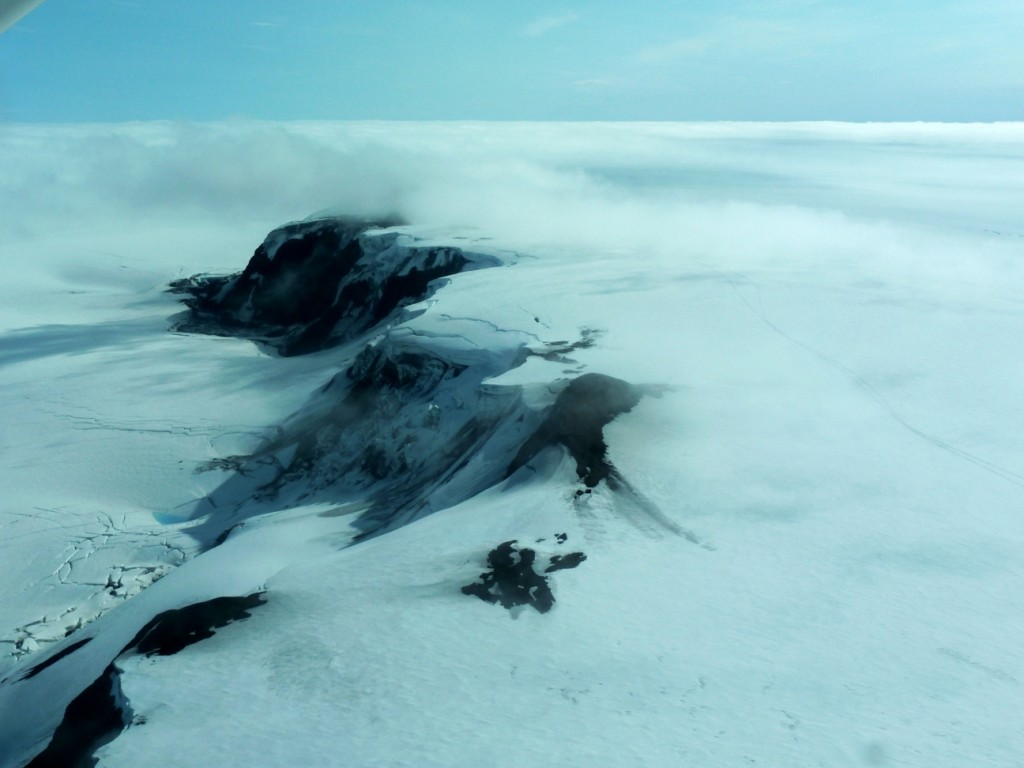
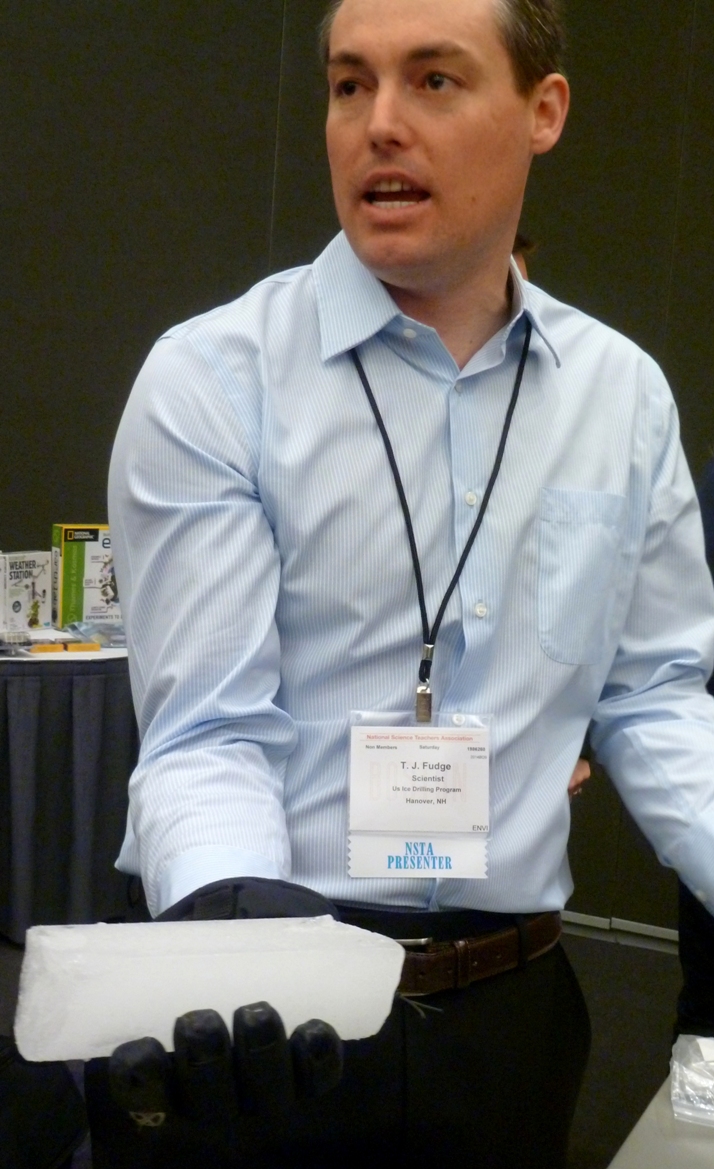
I think everyone should know about global warming. It is very important.
Global warming is hurting our planet. I think we should stop polution and recylceand lots more. Also lots of people are making it worst which is horrible.
Global warming is affecting our ice and snow. In the video the ice is melting very badly. Global warming is causing this.
I am happy that I got to see this page because alot of people should know about ice on earth
Global warming is bad for the earth. I have proof from, melting ice, extinct animals, forest fires and more. Global warming will ruin our futures. A way we can stop ruining our futures is by stop polluting. If we keep polluting then water will melt we will lose our water and we wiil die.
We should save the ice. The ice and ice sheets that are in the world are important ,they help slow down global warming.
I am really worried if all the glaciers melt, and we don’t do anything about it will our earth just be a body of water?
When ice melts glaciers, the sun no longer has a white surface to reflet on, thus making it hotter.
It was cool to see how the glaciers and ice were melting, even though it’s bad. Save Earth!!
I liked the video where you showed the ice dripping
Global Warming has affected our lives. The ice in my backyard melted in one day! That is proof that Global Warming is happening.The ice usually melts in 5-6 days!
Thanks For Listening
Wow, I knew the glaciers were melting, but I thought that it would be slower and more drawn out! The Glaciers Retreating and the Glaciers Melting video showed me just how fast glaciers are melting. In Glaciers Retreating, it showed me how a whole entire glacier that was huge, just melted. The map showed me how huge it was, and now, it’s all gone. It’s just replaced by dirt and rubbish now, all due to global warming. The Glaciers Melting video showed me how a glacier is melting right this second. I wish I could say that it’s melting one drip at a time, but sadly, it’s really not. About every square inch of it, dripping, dripping, dripping. The combined sounds of all their little landings make it sound like it’s raining. But no, it’s just melting, melting, melting.
I had no idea about much of the stuff I read! I had no idea that ice covers almost 15 million square kilometers on Earth!The ice is important because it helps keep Earth’s climate in balance, and it keeps Earth’s oceans at a good level.Also,
glaciers are cold, and very bright. White ice reflects the sun’s rays and the sun’s heat goes back into the atmosphere, instead of being absorbed by the ground. I have learned a lot from this blog post.
I think that iceland is a very interesting place. Iceland and places like it are melting because of global warming. I think we should stop putting so much carbon dioxide in the air and preserve these beautiful places like iceland.
I wonder when all the glaciers will melt and there will be no more left.
I think this was very interesting because all the stuff melting is from global warming and it was very cool to go on an adventure. It was like i was there and now I learned a whole ton of new facts
i learned its melting really fast
It was very cool seeing all she did in iceland. Our favorite was seeing how global warming is causing the glaciers to melt.
I can’t believe that the glaciers are melting that much!
Wow… soooooooooooooooooooooo cool! It’s so interesting how the water droplets are dripping from the cave/arch.
It is really interesting how the white ice reflects the suns rays into space!I didn’t know the ice melting was that fast. It looks really cool the way the ice drips but its not good at the same time.
I didn’t know that ice could be so white!
And what equipment do you use to get the ice cores
i thought that it was cool to see the glaciers melting. But it’s a big problem and we need to fix it.
We learned a lot. We were wondering how hard it was to get those ice cores out of the ice?
In this webpage we learned that global warming is causing all the ice to melt